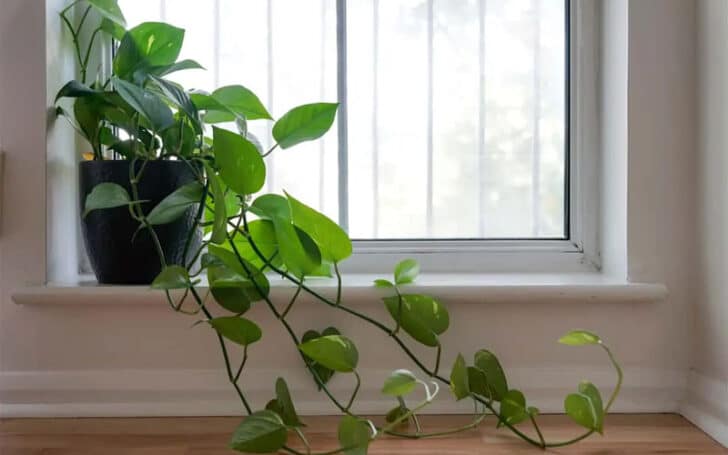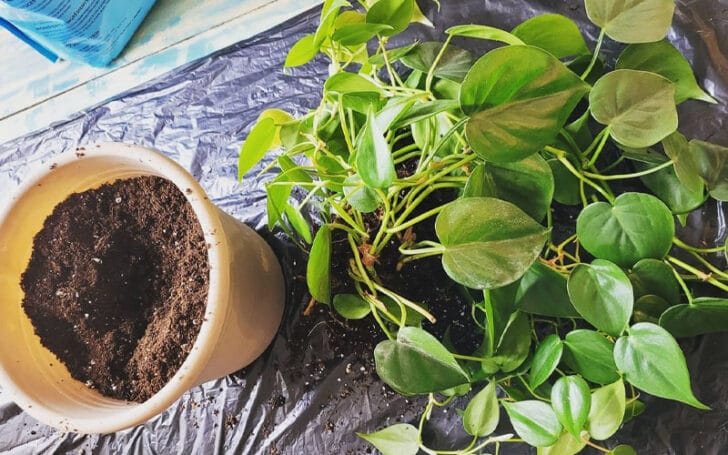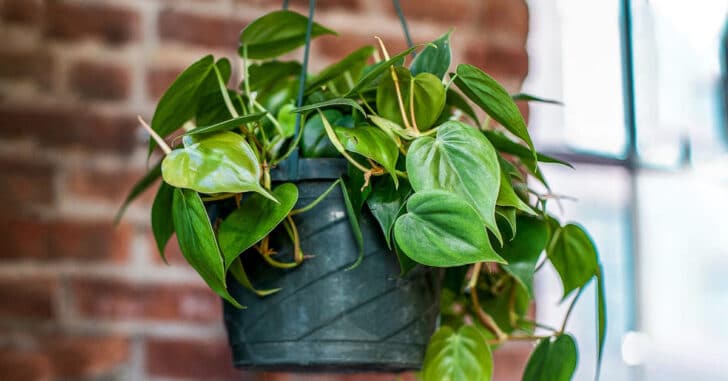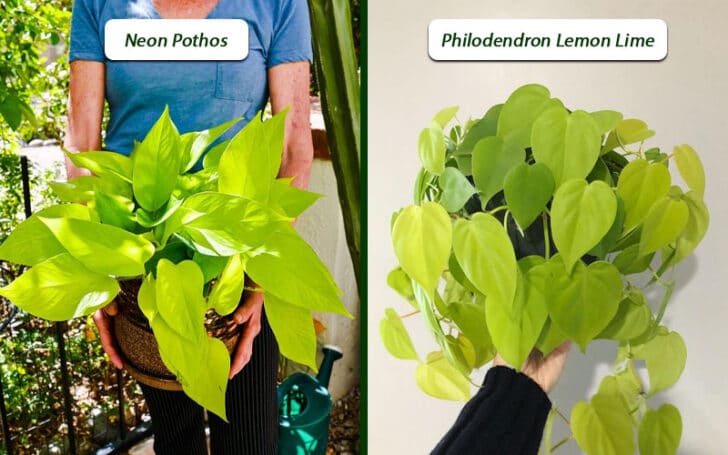Garden
Beautify Your House Landscape with Philodendron Cordatum | A Guide for Healthy & Fuller Plant
Philodendrons, such as pink princess plants, are among the most desired lists of nature lovers to add a sense of spaciousness and home to the space.
They are always looking for an easy-to-maintain houseplant that can be a great addition to enhancing the landscape beauty of their home.
Are you among those? Yup?
We have the perfect plant for you, philodendron cordatum!
So, how can you care for this heart-shaped leafy plant to beautify your home garden? Let us show you how!
Disclaimer: It is neither the common name for philodendron hederaceum nor is it the same as any pothos variety you’ve seen on several online blogs. Yeah! We discuss the difference later in our guide.
Philodendron Cordatum
| Plant Species | Philodendron Cordatum |
| Common Names | Sweetheart Vine, Heart Leaf Philodendron |
| Family | Araceae |
| Genus | Philodendron |
| Growth & Size | 2”-3” inches wider indoors (more in outdoors) |
| Confused With | Philodendron Hederaceum, Pothos, Brasil Cordatum |
| Care | Easy |
| Famous For | Low maintenance and cultivars |
Native to Brazil, philodendron cordatum is a beautiful houseplant popular for its striking heart-shaped leaves. With the right care, it can be a cascading, trailing or climbing flora.
You may also know this gorgeous indoor cultivar by the honey vine plant or the heartleaf philodendron. (also common name for Philodendron scandens and philodendron hederaceum)
It is a perennial herb with green emerald leaves, like other varieties and cultivars:
- Philodendron Cordatum Lemon Lime/Gold (lemon yellow veins in the middle of the leaves)
- Philodendron Cordatum Silver (leaves with a silvery tip)
- Philodendron Cordatum Brasil (yellow-green mottled)
In general, they do not challenge the growth of plants such as alocasia zebrina or some monstera varieties. Here is basic philodendron cordatum care:
- Light: Bright to medium indirect light (can survive in low light, but growth is affected)
- Soil: Any well-drained potting mix with wood bark, perlite, sphagnum moss.
- Watering: every 7-14 days (check soil moisture)
- Temperature: 13°C (55°F) to 28°C (82°F)
Let’s find out how you care for the stunning philodendron cordatum for its long and healthy life.
Philodendron Cordatum Care
Evergreen perennial green philodendron is a rare cordatum that requires little maintenance to grow and thrive.
It can also create a beautiful waterfall even with minimal maintenance, whether outside or inside.
. Philodendron Light

Philodendron cordatum prefers a spot with moderately bright indirect light, but can also grow well in a poorly lit area. However, low light will make them grow more slowly.
You can place them slightly away from an east-facing window or in front of an artificial grow light to increase their growth.
So, can green philodendrons cope with low light? Or what kind of sunlight do they need?
To answer the first, yes! They can withstand low sunlight for a long time (slow growth), but prefer to sit in moderate light.
Second, they cannot tolerate exposure to direct sunlight, so keep your philodendron plant away from any spot with high bright light.
Like other philodendrons, chordatum may require a moss, bamboo, or even sphagnum pole to support its climbing vine.
Also, leaves can grow 2 to 3 inches wider indoors. (Size differs outdoors)
. Soil
The heartleaf philodendron plant grows perfectly in a well-aerated soil mix containing bark, sphagnum, peat moss, coarse sand and plenty of perlite (to distribute moisture evenly throughout the cordate and prevent the soil from getting wet).
DIY Philodendron Cordatum Soil
Mix a handful of bark, some sphagnum and peat moss with a generous amount of perlite.
However, making up your potting mix is only a rough estimate, as philodendron cordatum is not a difficult plant to handle. You can always change the amount to adjust to your plant needs.
. Philodendron Watering
In bright, moderately indirect light, allow the topsoil to dry to the bottom before watering. If your Philodendron cordatum is in a low-light area, be sure to add 2/3 water to the dry soil.
Beautiful heart leaf cordatum likes to sit in moist soil with a good water level along its roots.
So how often should you water your philodendron cordatum?
Overwatering (yellow leaves) and overwatering (brown leaves) can affect your plant’s health. In general, if you observe any wilting of the plant, it’s time to give it some water.
You can also use a self-watering basket to give this philodendron the moisture it needs, as this plant is not a tough plant and can also cope with low watering.
Pro-Tip: Mist the leaves once or twice a week to retain moisture.
. Temperature
The heart-shaped leaves of Philodendron cordatum develop at temperatures between 13°C (55°F) and 28°C (82°F). However, they do not appreciate high heat.
Also, avoid rapid temperature changes.
. Humidity
The cordate plant needs bright to medium indirect light, moderate warmth and humidity to fully develop and grow. The ideal humidity level is above 70%.
It may grow slowly in a less humid area, but it won’t be happy sitting there for a while.
Pro-Tip: Use a humidifier or a water-filled pebble tray to increase humidity. You can also steam the leaves when they feel dry or wilted.
. Fertilization
The cordate plant needs to be fertilized every two weeks in early summer or spring (during the growing season) with a well-balanced fertilizer diluted to half strength.
For example, mix one teaspoon of diluted liquid fertilizer per gallon of water.
. Repotting
This philodendron doesn’t need much repotting, but only when the roots have grown (outside the pit). The ideal time is the growing season or early summer.
Take a pot 1-2 sizes larger than the previous one, add the new potting mix (combining with 30% soil in the past) and place the plant inside.
Pro-Tip: When repotting, check for damaged leaves or knots and trim with prune shears.
. Propagation

Philodendron cordatum propagation is similar to all other trailing varieties in this family. The easiest way is to use a stem cutting and then propagate it through soil or water.
How to Take the Stem Cutting:
Choose a healthy trunk or branch (with at least one node) and cut just above the leaf node. Also choose a long stem and make a few stem cuts or get a smaller one.
Here’s how you can grow it in water and soil:
Water:
Put your prepared cutting in water (keep the knuckle in and the leaves out of the water) and let it grow.
Make sure you put it in a humid and warm place. After a few days, when you notice new roots, transplant them into a freshly prepared potting mix.
Keep the new plant in a humid environment with bright indirect light and pay extra attention to its watering needs.
Soil:
Soil cordatum propagation is almost the same except for the irrigation process. In this method, you need to plant the cutting directly into a potting mix that provides the right humidity, temperature, and light.
You can also cover the newly developing roots with a plastic bag to maintain warmth and warmth.
Problems
Like other philodendron varieties, these plants tend to attract annoying insects such as aphids, mites, and scales. You may also observe yellowing of leaves with insufficient watering or brown leaves with excessive watering.
All you have to do is clean the leaves with a soft, weatherproof cloth to remove the dirt. You can also use a solution of warm water, alcohol (diluted) or DIY neem oil to fix these issues.
Philodendron Cordatum FAQ’s
Is philodendron Cordatum Toxic for Pets?
Yeah!
Philodendron cordatum is poisonous and toxic to pets such as cats and dogs. Therefore, keep the beautiful plant out of reach of pets.
If ingested, visit a veterinarian as they may suffer from digestive and respiratory problems.
How Do You Care For A Healthy Philodendron Cordatum Plant?
- Place your philodendron in a bright to medium indirect light spot
- Give it a good airy soil mix (perlite, bark, sphagnum, peat moss)
- Keep moist (not wet), but avoid overwatering
- Bi-weekly fertilization (balanced) throughout the growing season
- Prefers to sit in a moderately humid room (away from direct heat)
Philodendron Cordatum Vs. Philodendron Hederaceum?
Philodendron hederaceum is one of the most sought after philodendrons popular with plant enthusiasts. However, it is often confused with philodendron cordatum.
Hederaceum is native to Mexico or Central America and has glossy green leaves. More like scandens than Cordatum.
Is philodendron Cordatum a Good Indoor Plant?
Yeah! Philodendron cordatum is among the best indoor houseplants that are somewhat forgiving and tolerant of poor maintenance conditions (there are limits to this, of course).
Philodendron Cordatum Vs. Heartleaf?
Philodendron cordatum or heart leaf philodendron is the same plant with different names. Heartleaf is often referred to as a common name for hederaceum because they both have similar heart-shaped leaves.
What is Philodendron Cordatum Brasil?
Brasil philodendron is a fast growing variegated vine plant variety of the rare philodendron cordatum. It is popular because of its easy-care and beautiful yellow-green leaves.
What Are The Red Dots On My Leave?
These are probably nectar (happy sap) or sticky stuff that plants release to attract ants.
Are Pothos and Philodendrons The Same plants?
Despite the similarities between some pothos (neon) and philodendrons (Lemon-Lime), both are different plants with unique care requirements.
In neon pothos, the heart leaves elongate and new leaves emerge from the stem of an existing leaf.
Whereas, in philodendron cordatum lemon-lime, the leaves do not grow (perfectly heart-shaped) and emerge from a new rhizome.
How Can You Make Philodendron Fuller?
Philodendron Cordatum is a vine plant like peperomia hope. It requires occasional pruning and cleaning to keep its natural growth active and healthy. Prune the plant regularly (cut above the niche) for a fuller appearance.
Bottom Line
Philodendron cordatum is an excellent plant that can add a refreshing, aesthetic and warm atmosphere to its environment.
It is among the best houseplants that enhance the beauty of the room with its attractive cascading style growth.
Yes, indoor plants are one of the easiest to care for, but you still need to know all the basic philodendron care tips to help them look their fullest and healthy.
To help you out, we’ve outlined all the basic maintenance steps that can make your philodendron the best climber.
Here is a complete guide to know all about this magnificent epiphyte. Did we miss something you wanted to know? Share it with us in the comments below!
Finally, if you love reading such comprehensive and effective tips about your favorite plant varieties, check out the Molooco Blog’s Gardening category because we have so much more for you!
Also, don’t forget to pin/bookmark and visit our blog for more interesting but original information.


